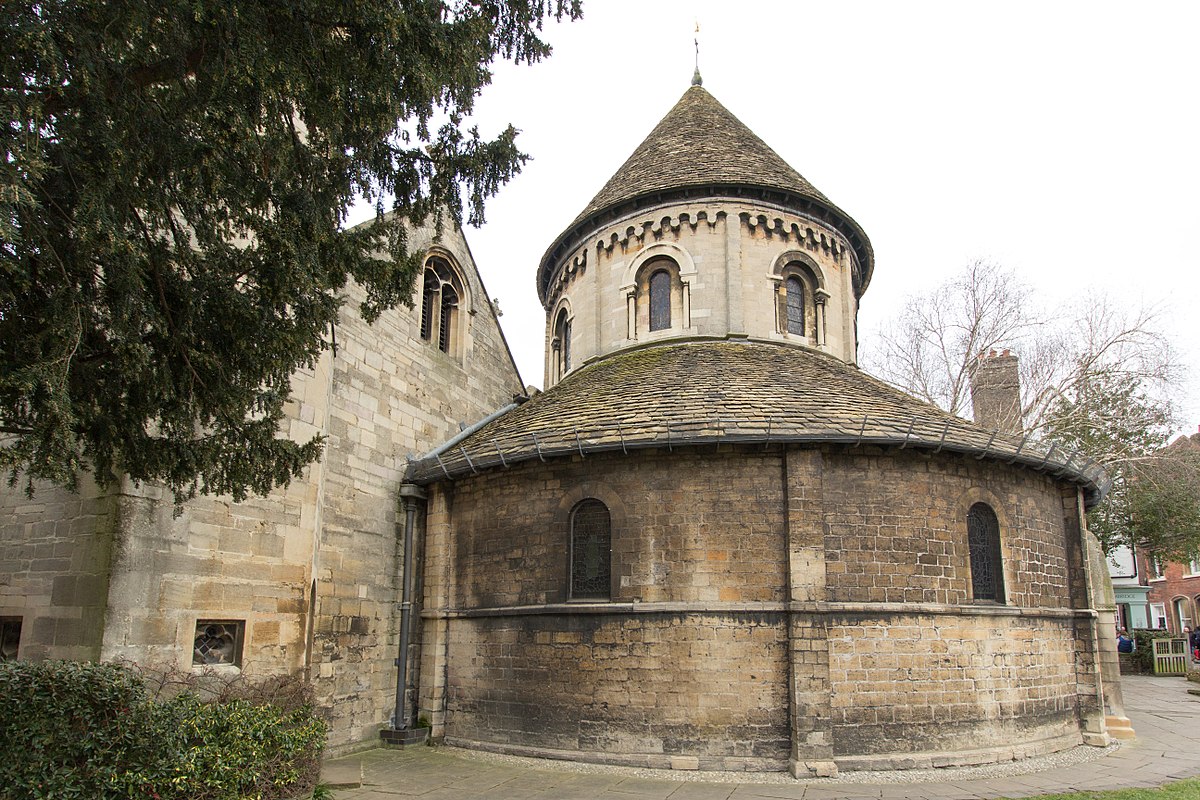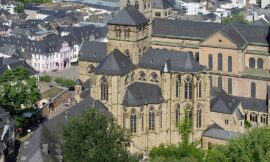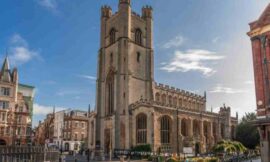The Round Church, formally known as the Church of the Holy Sepulchre, is one of Cambridge’s most iconic and historically significant landmarks. Situated in the heart of the city, this remarkable structure stands out not only for its distinctive architectural style but also for its rich history and the pivotal role it has played in the religious and cultural life of Cambridge.
Historical Background
Foundation and Early History:
- 12th Century Origins: The Round Church was built around 1130, during the Norman period, making it one of the oldest buildings in Cambridge. Its construction was inspired by the Church of the Holy Sepulchre in Jerusalem, a common model for churches built by the Crusaders.
- Crusader Influence: The church’s circular design is characteristic of the Romanesque style and reflects the influence of the Crusaders, who sought to emulate the sacred architecture they encountered in the Holy Land.
Religious Significance:
- Dedication: Dedicated to the Holy Sepulchre, the church’s round shape symbolizes the tomb of Christ and underscores its intended role as a pilgrimage site.
- Medieval Use: During the Middle Ages, the Round Church served as a parish church for the local community and played a central role in their spiritual lives.
Architectural Features
Unique Design:
- Round Nave: The most distinctive feature of the Round Church is its circular nave, which is supported by a series of massive Norman arches. This central space is both visually striking and architecturally significant, showcasing the craftsmanship of medieval builders.
- Ambulatory and Aisles: Surrounding the central nave is an ambulatory, which allows for processional movement around the church. This feature, along with the side aisles, contributes to the church’s unique spatial arrangement.
Exterior Details:
- West Front: The west front of the church is notable for its simplicity and solidity, characteristic of Norman architecture. The heavy stone construction and minimal decoration give the building a sense of enduring strength.
- Tower and Conical Roof: Originally, the church had a central tower with a conical roof, which was a common feature of round churches. This roof was replaced in the 19th century with a more pointed spire, reflecting Victorian restoration styles.
Historical Events and Restoration
17th and 18th Centuries:
- Civil War and Decline: During the English Civil War, the church suffered neglect and damage, leading to a period of decline in the following centuries. By the 18th century, it was in a state of disrepair, and its future was uncertain.
19th Century Revival:
- Restoration Efforts: In the 1840s, a major restoration project was undertaken by Anthony Salvin, a noted architect of the Gothic Revival movement. His work aimed to preserve the church’s historical integrity while making necessary repairs and alterations.
- Victorian Additions: Salvin’s restoration included the addition of a new chancel and the replacement of the original conical roof with a pointed spire. These changes, while controversial, helped to ensure the church’s survival and continued use.
The Round Church Today
Cultural and Educational Role:
- Visitor Attraction: Today, the Round Church is a popular tourist attraction in Cambridge, drawing visitors from around the world who come to admire its unique architecture and learn about its history.
- Exhibitions and Events: The church hosts a variety of exhibitions and events that explore the history of Christianity in England, the medieval period, and the impact of the Crusades. These programs are designed to educate and engage the public, fostering a deeper appreciation for the church’s heritage.
Religious Services:
- Continued Worship: Despite its role as a historical monument, the Round Church continues to function as a place of worship. Regular services are held, and the church remains an active part of the local religious community.
Conservation and Preservation:
- Ongoing Maintenance: The preservation of the Round Church is an ongoing effort, requiring careful maintenance and conservation to protect its ancient structure. This work is supported by various heritage organizations and the local community.
Significance and Legacy
Architectural Landmark:
- Unique Design: The Round Church stands out as one of the few surviving examples of a round church in England. Its distinctive design and historical significance make it an architectural landmark and a symbol of Cambridge’s rich heritage.
- Inspiration and Influence: The church’s design has inspired other buildings and continues to be a subject of study for architects and historians interested in Romanesque architecture and medieval history.
Cultural Heritage:
- Historical Insight: The Round Church offers invaluable insights into the religious and cultural life of medieval England. Through its architecture and history, visitors can gain a deeper understanding of the period and the enduring legacy of the Crusades.
- Educational Resource: As an educational resource, the church provides a tangible link to the past, helping to preserve and promote the understanding of historical and architectural heritage for future generations.
In conclusion, the Round Church in Cambridge is not only an architectural marvel but also a significant cultural and historical treasure. Its unique design, rich history, and ongoing role in the community make it a must-visit destination for anyone interested in the medieval period, religious history, or the architectural heritage of England.
Author’s Note
I may have visited the Round Church on my last trip to Cambridge, but I planned to stop by again this time. However, I faced a dilemma: my camera was malfunctioning, displaying an ‘Err 01 – Communications between the camera and lens is faulty. Clean the lens contacts’ error. With the IWM Duxford Air Show scheduled for tomorrow, I urgently needed to fix my camera. Regrettably, I forfeited my visit to the Round Church and set out in search of a camera store.



